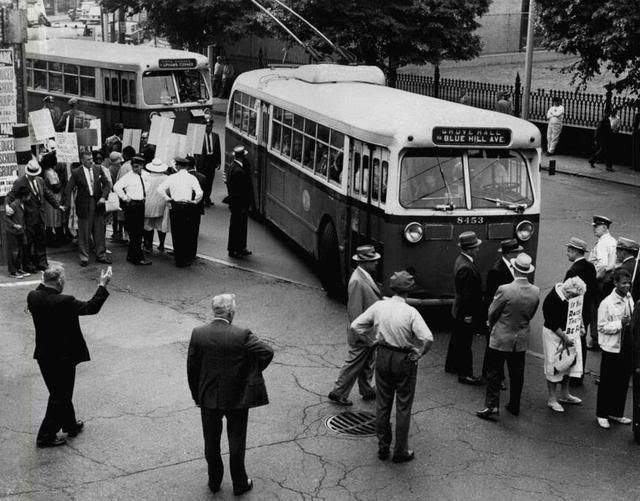by 3rdrail
I was able to pick up a couple of early trackless pics from the MTA era. The photos are dated 7/10/61 and show a demonstration to keep the MTA from abandoning service on Warren Street next to Dudley Station in the Triangle. I found it interesting and somewhat contradictory that we see what appears to be MTA brass guiding the trolleys into the station past the crowd being held back by Boston Police who would otherwise inhibit their entry. This would seem to be a contradiction of the group's aim to keep the coaches running on Warren. Could the date be noteworthy, such as a "last run" ? I wonder what the crowd would have though about the fact that not only were they about to lose their "buses", but lose their El as well, a scant 1/4 century from then ! These residents certainly got a raw deal. When I get time, I'll have to see if Warren St. closed before all trackless traffic going into Dudley did.




~Paul Joyce~
Moderator: Toy Trains, Model Railroading, Outdoor and Live Steam
Paul Joyce passed away in August, 2013. We honor his memory and his devotion at railroad.net.
Moderator: Toy Trains, Model Railroading, Outdoor and Live Steam
Paul Joyce passed away in August, 2013. We honor his memory and his devotion at railroad.net.